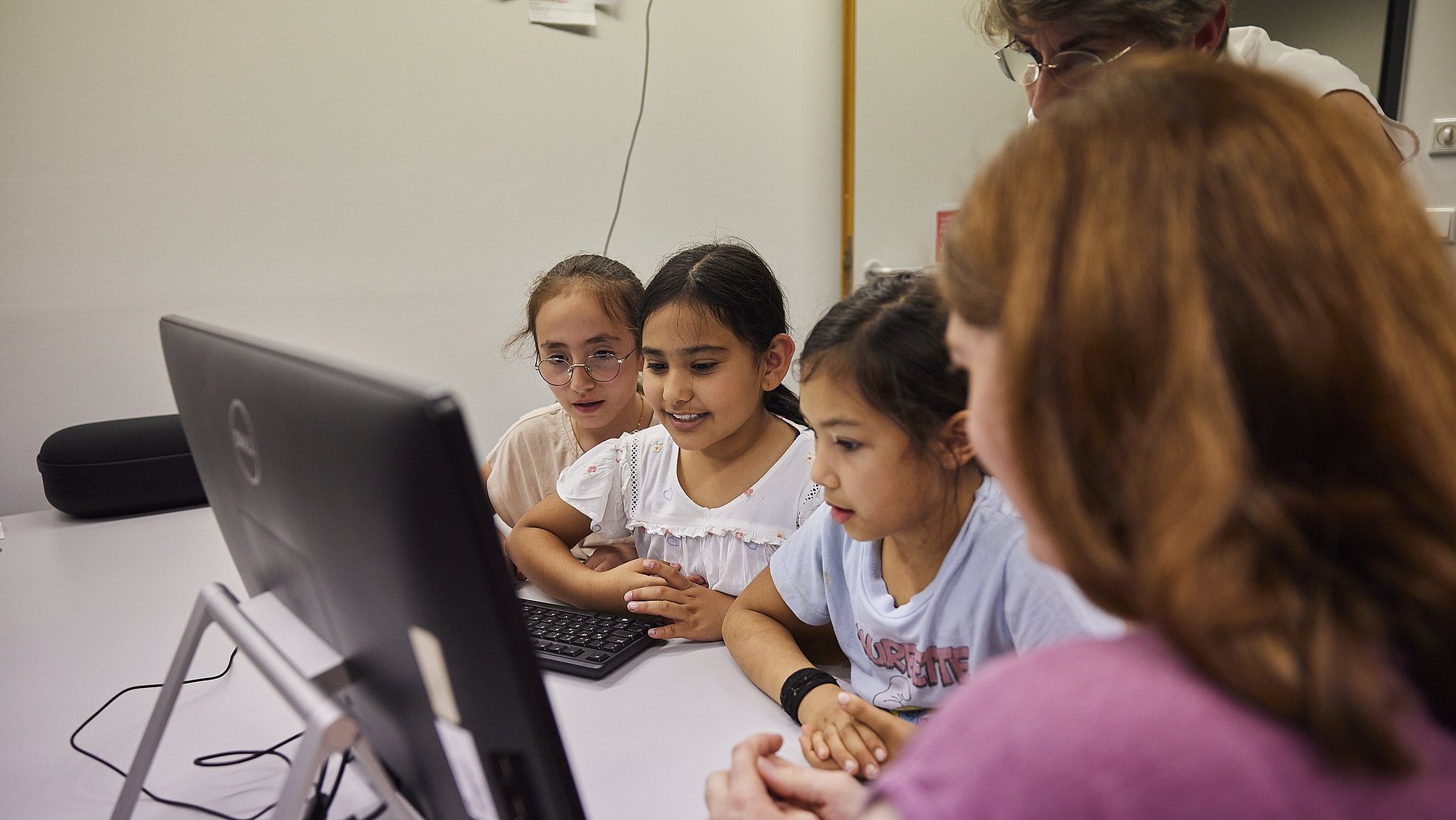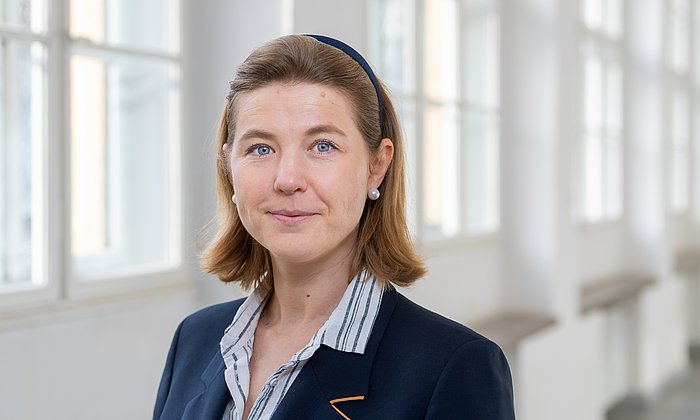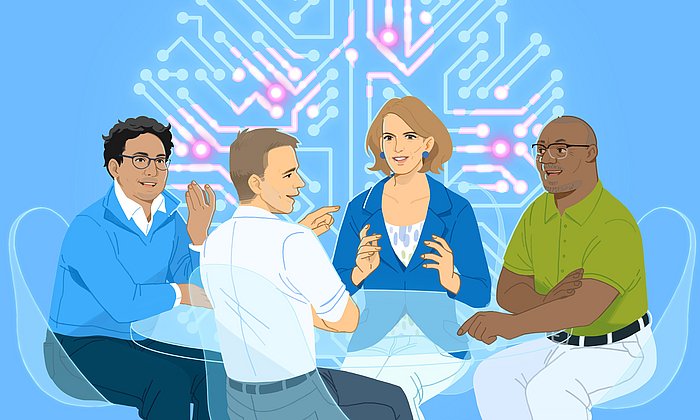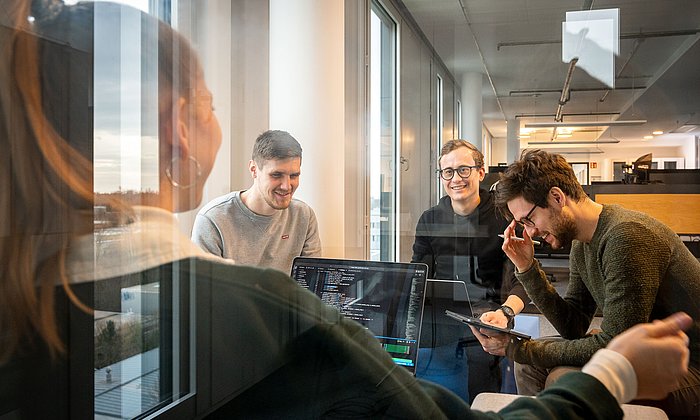Educational technologies
Learning better with artificial intelligence
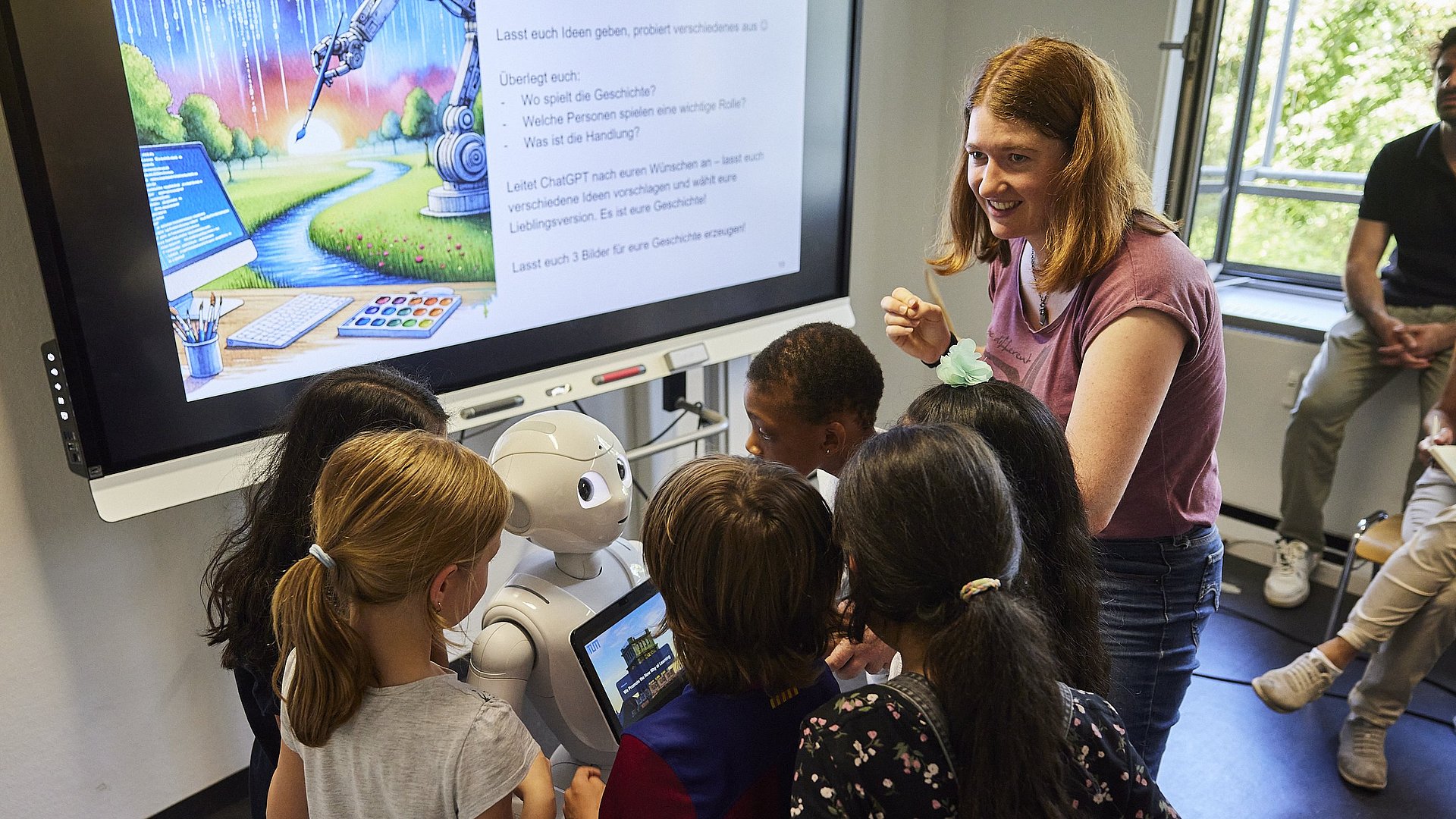
Of course, Pepper is the center of attention. A few girls from the front row walk up to the meter-tall white robot and hug it. At the back of the lab, which is funded by the IT Foundation Esslingen and located at the TUM Center for Educational Technologies in Munich’s Marsstrasse, 8-year-old Johan slides excitedly to and from on his chair. Alongside him, about three dozen second-graders are sitting in front of screens. Their task today is to write and illustrate a story with the help of artificial intelligence.
Prof. Enkelejda Kasneci explains the basics. The computer scientist and director of the EdTech Center asks the children if they know about ChatGPT. Of course, they’ve all heard of it. Then they talk about DALL-E, software that generates images from text descriptions. “The interaction between humans and AI plays a crucial role in modern education, especially for young students,” says Kasneci. She points out that by using interactive learning programs and AI-based tools, children can be motivated to explore and learn independently. They can also understand complex concepts better when they are presented in a simple and interactive way. “This promotes engagement and motivation.”
A program of the Roland Berger Foundation
TUM opened the EdTech Center at the TUM Institute for Lifelong Learning in 2023. Here, experts research, develop, and test educational technologies such as SAM, an AI-based learning environment for university teaching, and of course Pepper. The little robot currently only answers questions about anything and everything, but in the future children will be able to use it for specific learning projects. Future teachers will also be able to train in the use of AI in the classroom at the EdTech Center. “Experts from the fields of computer science, educational research, pedagogy, and natural sciences work together here on an interdisciplinary basis to research and test innovative educational technologies,” explains Enkelejda Kasneci. “This is unique in Germany; it allows us to create solutions that are groundbreaking in terms of both technology and teaching.”
The children sitting in front of the monitors right now have a scholarship from the Roland Berger Foundation. Its “Münchner Kindl” program supports primary school children who are ready to learn and achieve and who do not receive the necessary support at home for various reasons. The program focuses on language skills, mathematics, creativity, and digital learning. “AI tools help to maximize the potential of each child,” says Kasneci. “On the other hand, the scholarship holders bring a great deal of cultural diversity with them. This allows us to explore how AI topics can be taught in an inclusive way.”
At the end of the afternoon, the second graders have written a short story using AI and illustrated it. Johan proudly shows his screen and says: “My story is about a robot.”
- The TUM Center for Educational Technologies is the university’s center for innovation in digital education. Founded in 2023, the center develops, researches, and evaluates cutting-edge educational technologies.
This article was published in the 01/2025 issue of the new TUM Magazine.
Technical University of Munich
Corporate Communications Center
- Jeanne Rubner
- presse@tum.de
- Teamwebsite
Contacts to this article:
Prof. Dr. Enkelejda Kasneci
Human-Centered Technologies for Learning
